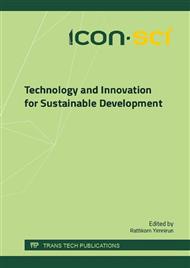p.72
p.76
p.80
p.85
p.89
p.95
p.99
p.103
p.107
State Diagrams of Two Thai Rice Varieties Differing in Amylose Contents
Abstract:
State diagram is a map of the different states of a food polymer as a function of water or solids content and temperature. The main advantage of drawing map is in identifying different states of a food polymer which helps in understanding the complex changes when food's water content and temperature are changed. It also assists in identifying food’s stability during storage as well as selecting suitable conditions for processing. This research successfully developed the state diagrams of two Thai rice varieties differing in amylose contents (San-pah-tawng and Phitsanulok 2) by measuring the glass line; glass transition temperature (Tg) vs. solids content, freezing curve; initial freezing point vs. solids content by using the differential scanning calorimetry (DSC) method. Rice with different amylose content exhibited similar freezing curves and glass transition patterns. The state diagrams obtained in this study are in agreement with previously published data. They can be useful in optimizing the drying and freezing processes as well as studying the physicochemical changes during storage of rice.
Info:
Periodical:
Pages:
89-94
Citation:
Online since:
July 2016
Authors:
Keywords:
Price:
Сopyright:
© 2016 Trans Tech Publications Ltd. All Rights Reserved
Share:
Citation:


